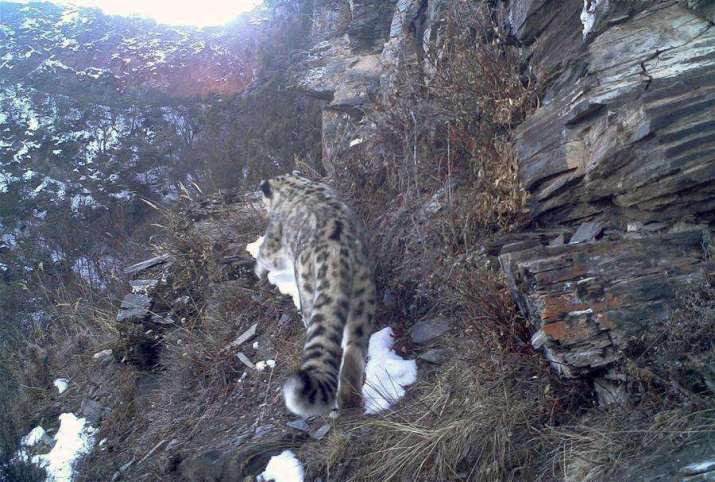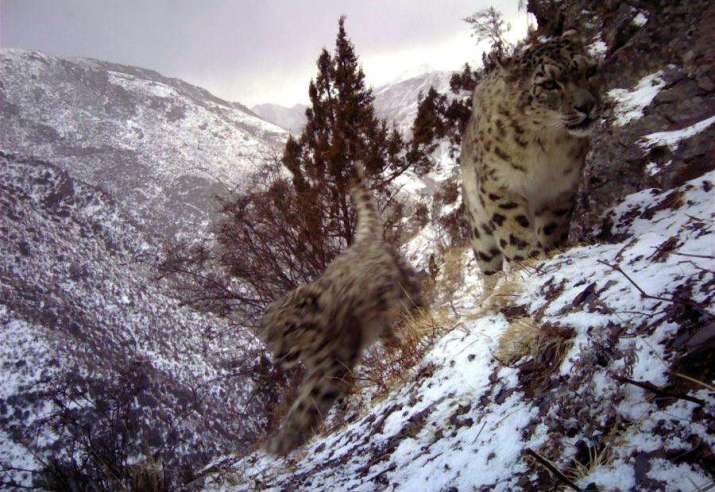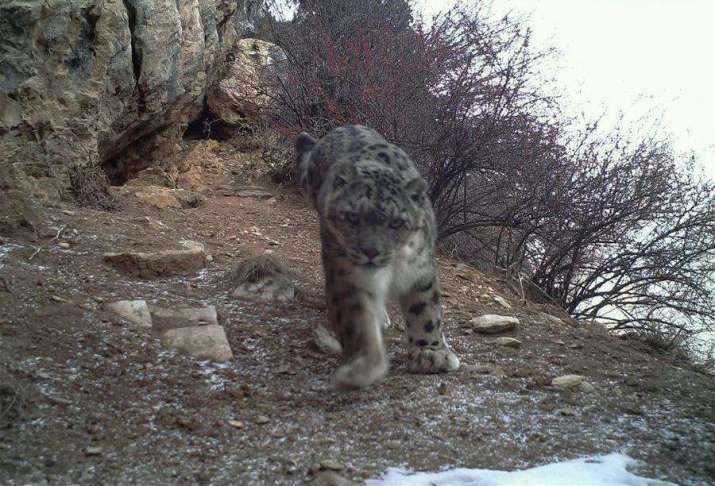
Wildlife camera traps have captured rare images of the usually solitary and elusive snow leopard in eastern Tibet for the first time, Chinese media have reported.
Twenty infrared cameras embedded in the Nujiang River Valley in southwest China’s Tibet Autonomous Region had recorded footage of snow leopards several times since November, officials for a local wildlife conservation center said. The area is regarded as one of Asia’s few remaining “wild rivers,” where there is minimal encroachment from human activity or infrastructure, such as dams, according to the US-based non-profit environmental group International Rivers.
The notoriously reclusive and highly camouflaged snow leopard, sometimes dubbed the “ghost of the mountains,” is found in remote mountain habitats in 12 countries across the Himalayas and the Tibetan Plateau: Afghanistan, Bhutan, China, India, Kazakhstan, Kyrgyzstan, Mongolia, Nepal, Pakistan, Russia, Tajikistan, and Uzbekistan. Nomadic by nature, they typically inhabit alpine and subalpine zones at elevations between 3,000 and 4,500 meters.
According to the Snow Leopard Trust, the species prefers “the broken terrain of cliffs, rocky outcrops, and ravines. This type of habitat provides good cover and clear views to help them find prey, and sneak up on it.”

“We have captured images of baby leopards with their mother, which indicates a certain quantity of the rare species live in the region,” said Zhao Xiang, head of the Shan Shui Conservation Center. (XinhuaNet)
The diet of these almost mythical cats is dependent on their location, but snow leopards most often hunt wild goats and sheep, especially the Himalayan blue sheep, Asiatic ibex, and the argali. They are also occasionally known to hunt domestic livestock, which can bring them into conflict with humans settlements.*
In September, the International Union for Conservation of Nature (IUCN) announced that it had raised its classification for the snow leopard on the ICUN Red List of Threatened Species to “Vulnerable” from “Endangered” for the first time in 45 years, following a three-year evaluation. To be considered endangered there must be fewer than 2,500 mature adult individuals in the wild, but experts now believe there may be a total wild population of some 4,000 snow leopards, with some estimating there could be as many as 10,000. Their elusive nature and the remoteness of their preferred habitats, however, makes a precise consensus difficult.
A local officials in the Himalayan region asserted that the appearance of snow leopards in the relatively populous region indicated that conservation efforts to protect the local ecosystem are paying off. Snow leopards are a “Class A” protected animal in China.
China is one of the most important countries for snow leopard conservation efforts, as it is home to as much as 60 per cent of all snow leopard habitat areas.

* New Report Shows Snow Leopards Under Grave Threat from Poaching (Buddhistdoor Global)
See more
Snow leopards spotted for first time in eastern Tibet (XinhuaNet)
Snow leopards spotted in China’s eastern Tibet for the first time, says report (Scroll.in)
Snow leopard no longer ‘endangered’ (BBC)
Snow Leopard Trust












